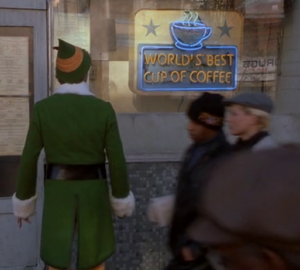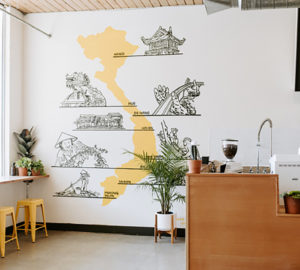A few short weeks ago, I had the opportunity to attend a brewing class from noted coffee expert and author Scott Rao, hosted at Auction Rooms in Melbourne. Rao’s done quite a few of these sorts of classes around the world over the past few years, and also runs a series of roasting classes—his specialty being the mix of highly technical information with practical application.
Being able to attend the brewing master class was an absolute pleasure, but as I sat there—rather than getting all investigative and asking Mr. Rao about total dissolved solids (TDS) and methods of extraction—I instead found myself reminiscing on my own beginnings into analytically thinking about coffee brewing.
A bit over five years ago, living in Brisbane and working at a run-of-the-mill cafe, I ordered Rao’s Everything But Espresso, borrowed a siphon from a friend, and sat down to nerd out hardcore on high-and-dry grounds. If you told me then that I’d later get a chance to sit in on a class from the man himself in Melbourne, I probably wouldn’t have believed you.
My start into coffee-making was originally at an Australian coffee chain (that I won’t name here) nearly a decade ago, where the golden rule of pouring 30 milliliters of espresso in 30 seconds was still in effect, and dripping honey was used as an analogy for flow rate. Crema color was our only real indicator of quality (rather than taste).
In the last five years or so, Australia’s coffee scene has gone through something of a revolution. Where you were once lucky to find a set of scales being used in a coffee shop, now the expected kit of a specialty shop includes a high-tech refractometer alongside a machine decked out with shot timers, and a well-considered grinder.
With scientific advancements in any hospitality industry, there is a danger of losing other quality aspects of service; the quintessential example is the well-intentioned, quality-focused specialty coffee professional freaking out over extraction rates, and handing over their coffees with no interaction. I’m no luddite, and I don’t blame technology for these situations, but it’s fair to say that good things can definitely be used in evil ways.
Funnily enough, Rao took a lot of this into account, while also arguably being somewhat responsible for all the fussiness in the first place. While it was my first time attending one of his talks, it felt like he’d adjusted his presentations over time to cater to the number of changing elements in the industry. From the very beginning, he promptly covered the controversial topic of preferring scientific numbers over flavor, pointing out that flavor and extraction are not matched in a linear sense. Something may taste good at an extraction yield of 17%, taste flat or dull at 19%, but peak in flavor at 21%—essentially, using the extraction scale in tandem with tasting has the potential to create a flavor quality and extraction map of sorts.
Rao dedicated a significant portion of time and a number of slides to the Mahlköenig EK 43 grinder, known as something of a cover girl in specialty coffee. It’s a grinder that found its way to stardom through talks from the inimitable Ben Kaminsky preaching its uniform particle distribution attributes, as well as use of it in barista competitions by Matt Perger. Widespread use of the EK43 has led many to re-evaluate the way they brew coffee and measure extraction, with the works of Kaminsky, Perger, and Rao resulting in an appreciable effect across fine coffee bars worldwide.
Once I got past the coffee-star-struckedness of my past self, hearing Scott Rao talk was, to my mind anyway, a perfect expression of where a lot of high-end coffee is today. If you make coffee for a living, and care about how it tastes, there are many tools at your disposal now to help. But for Rao, real progress can be made so long as coffee shops make an effort to focus on genuinely hospitable service alongside all this well-brewed coffee. So long as the refractometers don’t gain sentience, revolt, and take over the world, it’s a positive path ahead.
Eileen P. Kenny (@eileenpk) is a Sprudge.com staff writer and the publisher of Birds of Unusual Vitality, the coffee interview magazine. Read more Eileen P. Kenny on Sprudge.



































